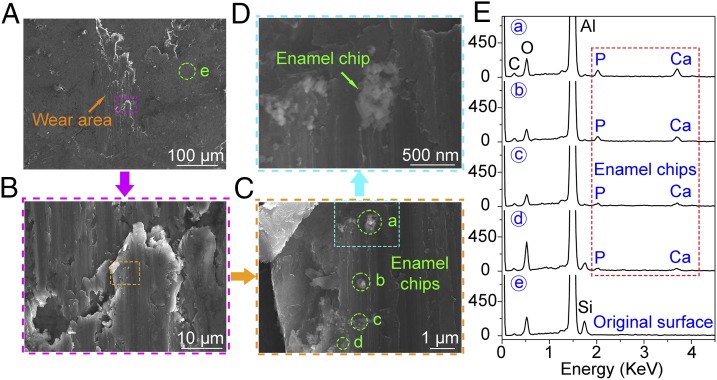Fig. 1.
Enamel chips embedded in the surface of the aluminum sphere after one cycle of drag under a contact pressure of 0.98 GPa. (A) SEM image of wear topography on the aluminum sphere. (B−D) The detail of the wear area in A, B, and C, respectively. (E) Enamel chips (a−d) in C were confirmed by the Ca and P peaks in the energy-dispersive X-ray spectroscopy (EDX) spectrum. The EDX detection on the original surface (e) in A is presented for comparison. Because the EDX instrument detection depth and area were about 1.5 μm and 1.5 μm2, respectively, and the diameter of the enamel chips was only 50–500 nm, Al made up a large percentage of the composition. However, Ca and P peaks were still discernable [hydroxyapatite is Ca10(PO4)6(OH)2], which confirms that the chips were enamel.

